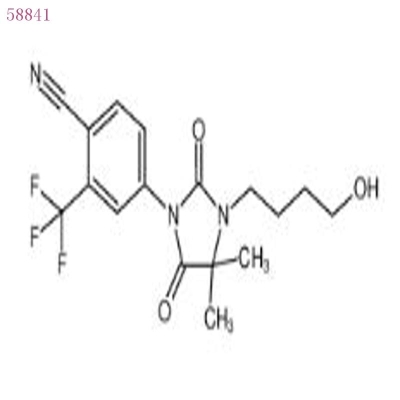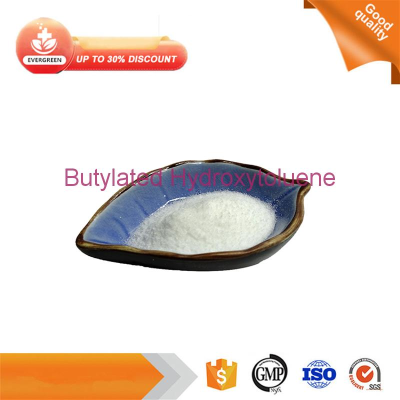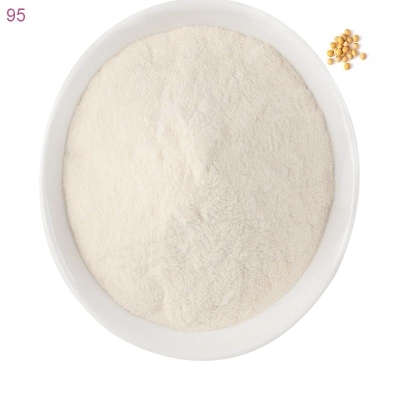-
Categories
-
Pharmaceutical Intermediates
-
Active Pharmaceutical Ingredients
-
Food Additives
- Industrial Coatings
- Agrochemicals
- Dyes and Pigments
- Surfactant
- Flavors and Fragrances
- Chemical Reagents
- Catalyst and Auxiliary
- Natural Products
- Inorganic Chemistry
-
Organic Chemistry
-
Biochemical Engineering
- Analytical Chemistry
- Cosmetic Ingredient
-
Pharmaceutical Intermediates
Promotion
ECHEMI Mall
Wholesale
Weekly Price
Exhibition
News
-
Trade Service
The color of fruits and vegetables is an important cosmetic quality of
horticultural crops.
Colorful colors not only give people beautiful visual enjoyment, but also affect the desire
of consumers to buy.
Taking tomatoes, the world's most productive vegetable crop, as an example, consumers in southern China prefer red fruit tomatoes, while consumers in the north prefer pink fruit tomatoes
.
It is of great scientific significance and application prospect
to study the molecular regulation mechanism of fruit and vegetable color formation in depth, and to use emerging biotechnology to realize the rapid customization of fruit and vegetable color on this basis.
horticultural crops.
Colorful colors not only give people beautiful visual enjoyment, but also affect the desire
of consumers to buy.
Taking tomatoes, the world's most productive vegetable crop, as an example, consumers in southern China prefer red fruit tomatoes, while consumers in the north prefer pink fruit tomatoes
.
It is of great scientific significance and application prospect
to study the molecular regulation mechanism of fruit and vegetable color formation in depth, and to use emerging biotechnology to realize the rapid customization of fruit and vegetable color on this basis.
The team of Li Chuanyou, a researcher at the Institute of Genetics and Developmental Biology of the Chinese Academy of Sciences, has been committed to tomato functional genomics for a long time, and has made a series of progress
in the mechanism of tomato fruit tone control and molecular design breeding 。 The research team revealed the mechanism of anthocyanin-free cultivated tomatoes to create a nutritional health purple tomato rich in anthocyanins in the pulp (Sun et al.
, 2020, Molecular Plant); The collaboration isolated the tomato orange fruit determinant gene (Zhou et al.
, 2022, Horticulture Research); A method for rapid creation of powdered tomato hybrids from excellent red tomato hybrids using gene editing technology was proposed (Deng et al.
, 2018, Journal of Genetics and Genomics; Yang et al.
,2019,Journal of Genetics and Genomics)
。
in the mechanism of tomato fruit tone control and molecular design breeding 。 The research team revealed the mechanism of anthocyanin-free cultivated tomatoes to create a nutritional health purple tomato rich in anthocyanins in the pulp (Sun et al.
, 2020, Molecular Plant); The collaboration isolated the tomato orange fruit determinant gene (Zhou et al.
, 2022, Horticulture Research); A method for rapid creation of powdered tomato hybrids from excellent red tomato hybrids using gene editing technology was proposed (Deng et al.
, 2018, Journal of Genetics and Genomics; Yang et al.
,2019,Journal of Genetics and Genomics)
。
Recently, the team and others published a study in Horticulture Research with the title of Recoloring tomato fruit by CRISPR/Cas9-mediated multiplex gene editing, and proposed a strategy
for using multiple gene editing technology to quickly and directly create seven different fruit tomato materials with red fruit tomato materials as chassis materials.
for using multiple gene editing technology to quickly and directly create seven different fruit tomato materials with red fruit tomato materials as chassis materials.
The color of tomato fruits is mainly determined
by pigments such as carotenoids, flavonoids, and chlorophyll.
With the ripening of the fruit, carotenoids (mainly lycopene) accumulate in the pulp of the red fruit material, and flavonoids (mainly naringenin chalcone) accumulate in the peel, accompanied by the rapid degradation
of chlorophyll.
Based on this, a homozygous triple mutant (psy1 myb12 sgr1)
was obtained by targeting multiple gene editing systems to knock out the key genes that control the synthesis or metabolism of three types of pigments in red fruit tomatoes, including the lycopene synthesis rate-limiting enzyme gene PSY1, the key regulatory gene MYB12 of flavonoid synthesis, and the chlorophyll degradation rate-limiting enzyme gene SGR1 was obtained.
The fruit of the triple mutant cannot synthesize lycopene and naringenin chalcone during ripening, and its chlorophyll cannot be degraded normally, so it appears green
.
Subsequently, the triple mutant was backcrossed with the red fruit chassis material, and a single BC1F1 strain without foreign DNA fragments was screened for self-inbreeding to construct a BC1F2 isolation population
。 Through the molecular identification of BC1F2 isolated populations, tomato materials of different genotypes and fruit colors were obtained, including wild type (red), psy1 mononeurite (orange), myb12 mononeurite (pink fruit), sgr1 single mutant (brown), psy1 myb12 double mutant (yellow), myb12 sgr1 double mutant (reddish-purple), psy1 sgr1 double mutant (yellow-green) and psy1 myb12 sgr1 triple mutant (green).
。 Further studies showed that the strategy had no effect
on traits such as fruit weight, yield, soluble solids content and vitamin C content, except for fruit color correlation traits.
by pigments such as carotenoids, flavonoids, and chlorophyll.
With the ripening of the fruit, carotenoids (mainly lycopene) accumulate in the pulp of the red fruit material, and flavonoids (mainly naringenin chalcone) accumulate in the peel, accompanied by the rapid degradation
of chlorophyll.
Based on this, a homozygous triple mutant (psy1 myb12 sgr1)
was obtained by targeting multiple gene editing systems to knock out the key genes that control the synthesis or metabolism of three types of pigments in red fruit tomatoes, including the lycopene synthesis rate-limiting enzyme gene PSY1, the key regulatory gene MYB12 of flavonoid synthesis, and the chlorophyll degradation rate-limiting enzyme gene SGR1 was obtained.
The fruit of the triple mutant cannot synthesize lycopene and naringenin chalcone during ripening, and its chlorophyll cannot be degraded normally, so it appears green
.
Subsequently, the triple mutant was backcrossed with the red fruit chassis material, and a single BC1F1 strain without foreign DNA fragments was screened for self-inbreeding to construct a BC1F2 isolation population
。 Through the molecular identification of BC1F2 isolated populations, tomato materials of different genotypes and fruit colors were obtained, including wild type (red), psy1 mononeurite (orange), myb12 mononeurite (pink fruit), sgr1 single mutant (brown), psy1 myb12 double mutant (yellow), myb12 sgr1 double mutant (reddish-purple), psy1 sgr1 double mutant (yellow-green) and psy1 myb12 sgr1 triple mutant (green).
。 Further studies showed that the strategy had no effect
on traits such as fruit weight, yield, soluble solids content and vitamin C content, except for fruit color correlation traits.
Compared with conventional backbreeding and reproduction, this strategy has the advantages
of saving time and effort, one-step, not causing chain burden, and not affecting other agronomic traits.
The strategy is easily replicated and generalized to other horticultural crops such as vegetables, fruits and flowers, and has a reference for
the genetic improvement of other polygenic control traits.
of saving time and effort, one-step, not causing chain burden, and not affecting other agronomic traits.
The strategy is easily replicated and generalized to other horticultural crops such as vegetables, fruits and flowers, and has a reference for
the genetic improvement of other polygenic control traits.
Relevant research work has been funded
by the National Key Research and Development Program of China, the National Natural Science Foundation of China and other projects.
by the National Key Research and Development Program of China, the National Natural Science Foundation of China and other projects.







